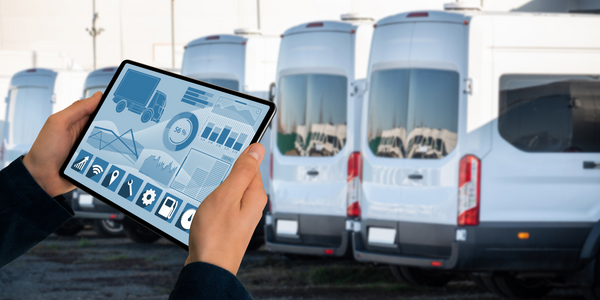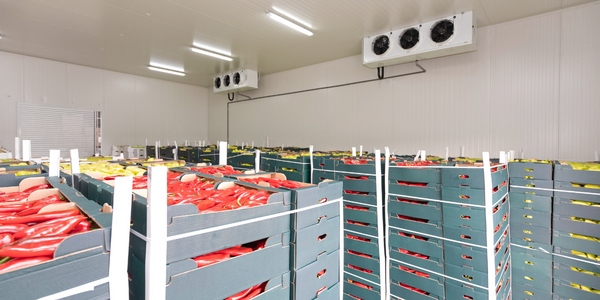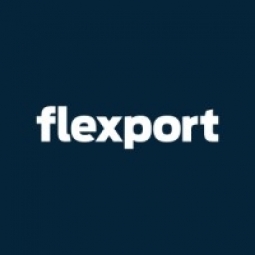Technology Category
- Analytics & Modeling - Computer Vision Software
- Platform as a Service (PaaS) - Application Development Platforms
Applicable Industries
- Paper & Pulp
- Transportation
Applicable Functions
- Logistics & Transportation
- Sales & Marketing
Use Cases
- Supply Chain Visibility
- Transportation Simulation
About The Customer
GP Cellulose is a division of Georgia-Pacific, a leading producer of paper pulp materials. The company operates four world-class wood pulp mills in the southeastern United States and serves customers in more than 75 countries globally. GP Cellulose accounts for approximately 80% of Georgia-Pacific's export shipments, making it the second-largest exporter in North America. The company produces materials for a wide range of products, including baby diapers, feminine hygiene products, and medical gauze. As part of its digital transformation initiative, GP Cellulose aims to standardize technology systems and processes for its supply chain, eliminate manual and low-value tasks, and improve the customer experience.
The Challenge
GP Cellulose, a division of Georgia-Pacific, is a leading producer of paper pulp materials, operating four mills in the southeastern United States and serving customers in over 75 countries. Despite being the second-largest exporter in North America, GP Cellulose faced significant challenges in managing its international shipments. The company's logistics, production, and customer service teams were grappling with disparate systems, leading to an overwhelming volume of emails and spreadsheets. This lack of integration hampered productivity and provided little visibility to mitigate errors and improve supply chain performance. Furthermore, GP Cellulose needed clear, actionable data to optimize performance internally and with its ocean transportation partners. The company was also undergoing a digital transformation initiative, aiming to standardize technology systems and processes for its supply chain, eliminate manual and low-value tasks, and improve the customer experience.
The Solution
To address these challenges, GP Cellulose partnered with Flexport, a digital-first freight forwarding company. Flexport's technology platform was used to re-examine GP Cellulose's existing processes and design a solution that would provide new visibility and efficiency across the supply chain. This partnership empowered 60 logistics analysts, customer service representatives, and production leads at GP’s mills, improving data accuracy and accelerating the shipping process to over 1,000 unique delivery locations globally. Flexport also helped GP Cellulose consolidate its communication into the Flexport platform, reducing the number of emails sent per shipment and eliminating about 45,000 emails each year. Furthermore, Flexport's platform provided a single source of truth to manage international shipments, track exceptions, manage customer expectations, and achieve 100% on-time customs filings.
Operational Impact
Quantitative Benefit

Case Study missing?
Start adding your own!
Register with your work email and create a new case study profile for your business.
Related Case Studies.

Case Study
Airport SCADA Systems Improve Service Levels
Modern airports are one of the busiest environments on Earth and rely on process automation equipment to ensure service operators achieve their KPIs. Increasingly airport SCADA systems are being used to control all aspects of the operation and associated facilities. This is because unplanned system downtime can cost dearly, both in terms of reduced revenues and the associated loss of customer satisfaction due to inevitable travel inconvenience and disruption.

Case Study
IoT-based Fleet Intelligence Innovation
Speed to market is precious for DRVR, a rapidly growing start-up company. With a business model dependent on reliable mobile data, managers were spending their lives trying to negotiate data roaming deals with mobile network operators in different countries. And, even then, service quality was a constant concern.

Case Study
Digitize Railway with Deutsche Bahn
To reduce maintenance costs and delay-causing failures for Deutsche Bahn. They need manual measurements by a position measurement system based on custom-made MEMS sensor clusters, which allow autonomous and continuous monitoring with wireless data transmission and long battery. They were looking for data pre-processing solution in the sensor and machine learning algorithms in the cloud so as to detect critical wear.

Case Study
Cold Chain Transportation and Refrigerated Fleet Management System
1) Create a digital connected transportation solution to retrofit cold chain trailers with real-time tracking and controls. 2) Prevent multi-million dollar losses due to theft or spoilage. 3) Deliver a digital chain-of-custody solution for door to door load monitoring and security. 4) Provide a trusted multi-fleet solution in a single application with granular data and access controls.

Case Study
Vehicle Fleet Analytics
Organizations frequently implement a maintenance strategy for their fleets of vehicles using a combination of time and usage based maintenance schedules. While effective as a whole, time and usage based schedules do not take into account driving patterns, environmental factors, and sensors currently deployed within the vehicle measuring crank voltage, ignition voltage, and acceleration, all of which have a significant influence on the overall health of the vehicle.In a typical fleet, a large percentage of road calls are related to electrical failure, with battery failure being a common cause. Battery failures result in unmet service agreement levels and costly re-adjustment of scheduled to provide replacement vehicles. To reduce the impact of unplanned maintenance, the transportation logistics company was interested in a trial of C3 Vehicle Fleet Analytics.

Case Study
3M Gains Real-Time Insight with Cloud Solution
The company has a long track record of innovative technology solutions. For example, 3M helps its customers optimize parking operations by automating fee collection and other processes. To improve support for this rapidly expanding segment, 3M needed to automate its own data collection and reporting. The company had recently purchased the assets of parking, tolling, and automatic license plate reader businesses, and required better insight into these acquisitions. Chad Reed, Global Business Manager for 3M Parking Systems, says, “With thousands of installations across the world, we couldn’t keep track of our software and hardware deployments, which made it difficult to understand our market penetration.” 3M wanted a tracking application that sales staff could use to get real-time information about the type and location of 3M products in parking lots and garages. So that it could be used on-site with potential customers, the solution would have to provide access to data anytime, anywhere, and from an array of mobile devices. Jason Fox, Mobile Application Architect at 3M, upped the ante by volunteering to deliver the new app in one weekend. For Fox and his team, these requirements meant turning to the cloud instead of an on-premises datacenter. “My first thought was to go directly to the cloud because we needed to provide access not only to our salespeople, but to resellers who didn’t have access to our internal network,” says Fox. “The cloud just seemed like a logical choice.”







